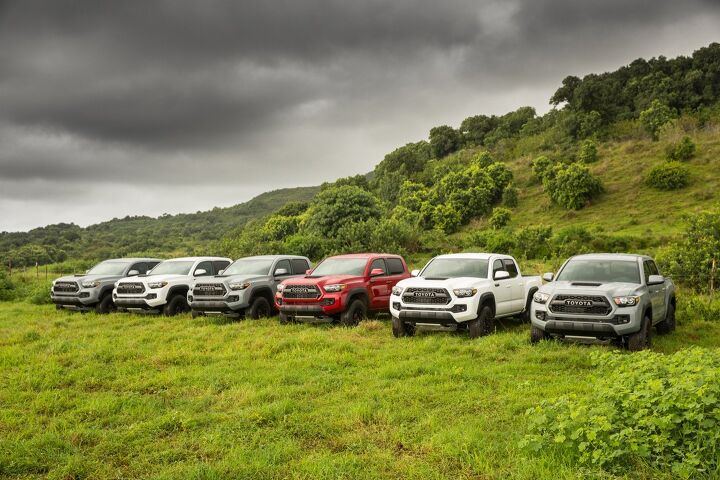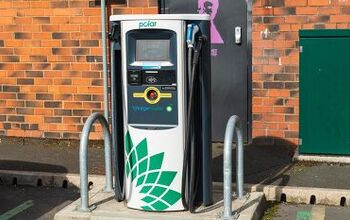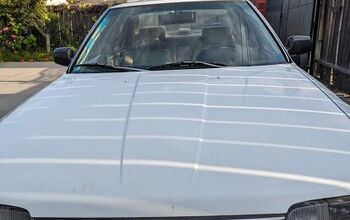Toyota: U.S. Auto Market "Very, Very Healthy"
Toyota Motor North America’s executive vice president for sales, Bob Carter, is not ready to rain down doom and gloom on the state of the U.S. auto market.
From Toyota’s perspective, even the July results — 2017’s seventh consecutive month of decline, and the worst decline yet — didn’t represent the end of the American auto industry as we know it. In fact, total Toyota/Lexus U.S. volume actually increased 4 percent despite a shorter sales month than in July 2016.
While aware of the overall climate, in which Toyota sales are down more than 2 percent this year, Toyota’s U.S. sales boss says he’s “energized,” according to Automotive News. “The industry is not at a pace where it was in 2016 — we didn’t expect it to be at the pace of 2016,” Carter says, “but it’s still very healthy.”
And not without good reason.
For the market as a whole, the U.S. auto industry’s 3-percent year-to-date slide through the end of July is almost wholly caused by a sharp downturn in passenger car sales. But that 12-percent drop in car volume — equal to 510,000 fewer sales in the first seven months of 2017 compared with the same period one year ago — is partly offset by a 220,000-unit improvement in light truck volume.
More profitable light truck volume.
As an example, the rapidly shrinking midsize sedan segment has lost more than 230,000 sales so far this year, sales of cars with average transaction prices falling in July to $24,852, according to Kelley Blue Book. Sales of compact and subcompact crossovers, however, rose by more than 90,000 units at average transaction prices in July of $28,415 and $24,478, respectively.
In Toyota’s July sales picture, more specifically, passenger car volume slid by nearly 12,000 sales last month, a loss incurred largely by the Prius family and the Corolla sedan. But while Toyota lost those sales, it added nearly 20,000 light truck sales, boosted by an all-time record high of 41,804 RAV4 sales, a 13-percent uptick in Lexus utility vehicle volume, rising pickup truck sales, the Highlander’s 13th consecutive monthly improvement, and the 4Runner’s eighth consecutive monthly improvement.
Those are not troubling figures for Toyota.
As a result, Toyota’s Carter disagrees with the idea that “U.S. car sales crumbled” in July, instead saying that, “We’re not on a sleigh ride down.” A plateau over the next 24 to 36 months with annual sales above 16 million units, Carter says, is good for dealers, customers, and OEMs.
Yes, auto sales are falling. But that fall is in comparison with record high levels in 2016. Never before had auto sales been so numerous. Moreover, numerous automakers are attempting to severely limit their fleet volume — GM, Ford, and FCA reported a total loss of 75,761 sales in July but “only” 46,175 fewer retail sales. A first glance suggests an apparent nosedive, but there’s more to the story.
Inventory concerns remain at some automakers, though Toyota entered July with far less supply than the industry average. The average per-vehicle incentive spend in July rose 5 percent, year-over-year, across the industry, although Toyota/Lexus was 28-percent below the industry average at $2,550, according to TrueCar. And the industry is still faced with numerous car-heavy lineups. Indeed, Toyota’s major 2017 launch is of the 2018 Toyota Camry — a midsize car in a compact crossover world.
Toyota still feels positive about the Camry’s opportunity. “We’re starting to see innovative products and investment coming to passenger cars for the first time in years,” Carter tells Automotive News. “Through these investments, I do believe we will see some stabilization of the midsize sedan market.”
It’s unlikely that you’ll find anybody, one year from now, describing America’s midsize sedan market as “very, very healthy.”
[Images: Toyota]
Timothy Cain is a contributing analyst at The Truth About Cars and Autofocus.ca and the founder and former editor of GoodCarBadCar.net. Follow on Twitter @timcaincars.
More by Timothy Cain
Latest Car Reviews
Read moreLatest Product Reviews
Read moreRecent Comments
- CoastieLenn I would do dirrrrrrty things for a pristine 95-96 Thunderbird SC.
- Whynotaztec Like any other lease offer it makes sense to compare it to a purchase and see where you end up. The math isn’t all that hard and sometimes a lease can make sense, sometimes it can’t. the tough part with EVs now is where is the residual or trade in value going to be in 3 years?
- Rick T. "If your driving conditions include near-freezing temps for a few months of the year, seek out a set of all-seasons. But if sunshine is frequent and the spectre of 60F weather strikes fear into the hearts of your neighbourhood, all-seasons could be a great choice." So all-seasons it is, apparently!
- 1995 SC Should anyone here get a wild hair and buy this I have the 500 dollar tool you need to bleed the rear brakes if you have to crack open the ABS. Given the state you will. I love these cars (obviously) but trust me, as an owner you will be miles ahead to shell out for one that was maintained. But properly sorted these things will devour highway miles and that 4.6 will run forever and should be way less of a diva than my blown 3.8 equipped one. (and forget the NA 3.8...140HP was no match for this car).As an aside, if you drive this you will instantly realize how ergonomically bad modern cars are.These wheels look like the 17's you could get on a Fox Body Cobra R. I've always had it in the back of my mind to get a set in the right bolt pattern so I could upgrade the brakes but I just don't want to mess up the ride. If that was too much to read, from someone intamately familiar with MN-12's, skip this one. The ground effects alone make it worth a pass. They are not esecially easy to work on either.
- Macca This one definitely brings back memories - my dad was a Ford-guy through the '80s and into the '90s, and my family had two MN12 vehicles, a '93 Thunderbird LX (maroon over gray) purchased for my mom around 1995 and an '89 Cougar LS (white over red velour, digital dash) for my brother's second car acquired a year or so later. The Essex V6's 140 hp was wholly inadequate for the ~3,600 lb car, but the look of the T-Bird seemed fairly exotic at the time in a small Midwest town. This was of course pre-modern internet days and we had no idea of the Essex head gasket woes held in store for both cars.The first to grenade was my bro's Cougar, circa 1997. My dad found a crate 3.8L and a local mechanic replaced it - though the new engine never felt quite right (rough idle). I remember expecting something miraculous from the new engine and then realizing that it was substandard even when new. Shortly thereafter my dad replaced the Thunderbird for my mom and took the Cougar for a new highway commute, giving my brother the Thunderbird. Not long after, the T-Bird's 3.8L V6 also suffered from head gasket failure which spelled its demise again under my brother's ownership. The stately Cougar was sold to a family member and it suffered the same head gasket fate with about 60,000 miles on the new engine.Combine this with multiple first-gen Taurus transmission issues and a lemon '86 Aerostar and my dad's brand loyalty came to an end in the late '90s with his purchase of a fourth-gen Maxima. I saw a mid-90s Thunderbird the other day for the first time in ages and it's still a fairly handsome design. Shame the mechanicals were such a letdown.



































Comments
Join the conversation
Toyota has every reason to be optimistic. They have built a great reputation for reliability and durability.
I'm glad Toyota is happy. I'd be happy driving a new Toyota too, but due to Toyota's poor option packaging on new vehicles I bought a Ford instead. No regrets. Maybe next time Toyota will listen to its customers.